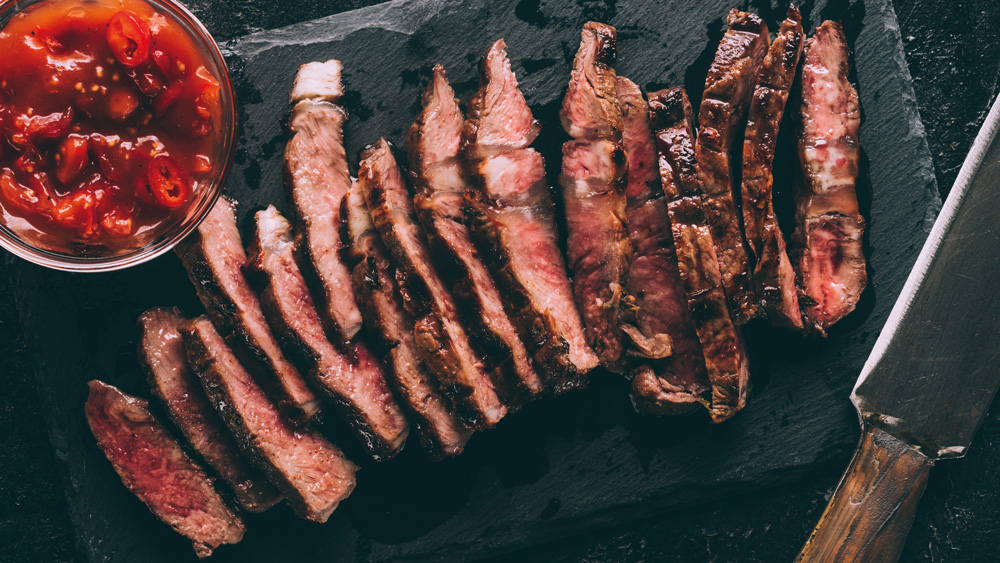How To Cook Meat Like A Pro
Consider these tips from top chefs a meat masterclass

Preheat your meat
Apart from tiny things such as squid, prawns and so on, protein cooks better if it’s at room temperature first. Jacob Kenedy, Bocca Di Lupo
Stop smoking
If you need a very hot pan because you’re cooking, say, a steak, add your oil after the pan has been heated to the required temperature or the oil will burn. Shirin Kouros, The Good Life Eatery
Soak and serve
If you perfect your marinades, meat will taste so good you won’t need a rich sauce. Blitz lemongrass, ginger, garlic, spring onions, coriander, salt and olive oil together in a blender for a perfect Asian-style marinade. Caroline Mili Artiss, The Gorgeous Kitchen
Use the shoulder
Pork shoulder, or blade, is very versatile. It can be fried, or slow-roasted for as long as six hours. Cook it with apples and carrots. Allan Pickett, The Globe
Nice cubes
Freeze cubes of lamb or beef to make kebabs. Coat them in yogurt before freezing – it will make them more tender when you thaw and then grill them. Tony Kitous, Comptoir Libanais
Super soaker
Use acidic marinades to make meat tender. Marinate small cuts for one to 24 hours, or big ones for one to two days, in a yogurt- or lemon juice-based marinade. It’s especially good for barbecuing. Jacob Kenedy
The thighs have it
When properly seasoned and cooked at a high heat, chicken thighs release any excess fat and crisp up, giving you all the flavour and none of the health downsides. Sprinkle them with salt before cooking. Lee Bennett, Monte Carlo, Las Vegas
Get the Coach Newsletter
Sign up for workout ideas, training advice, reviews of the latest gear and more.
Paper baked
Use baking parchment or silicon paper – not greaseproof paper – in the bottom of your frying pan. You’ll need next to no fat in the pan, nothing will stick and your meat will colour nicely. Bernhard Engelhardt
Bag it up
When using skinless chicken breast or any other lean meat, try cooking it sous-vide by placing it in a vacuum bag in a water bath at low temperature of 55-64°C for about 45 minutes. This will reduce shrinkage of the meat while retaining all the nutrients, flavour and goodness. Bernhard Engelhardt
Lean out
Lean protein lends itself to lean cooking. Steaks and white meats such as veal, pork, chicken, rabbit and fish are ideal for grilling, searing, poaching and roasting. Jacob Kenedy
See related
Face facts
Pork cheeks are widely used in restaurants but not at home. Season them and throw them in a casserole dish for a few hours for a cheap, tasty meal. Lee Bennett
Rest for success
Lean meats dry out more easily while cooking, so it’s important that you rest them afterwards to distribute the juice through the meat. As a rule, rest your meat for one minute per 100g. Cover big cuts loosely in foil to stop them getting cold. Gee Charman, The Gorgeous Kitchen
Pork out
For better bacon, bring it to room temperature before cooking, then put it in a frying pan before you turn on the heat. This will ensure the bacon heats up slowly, maximising the amount of fat rendered out of the bacon. Theresa Gilliam, Bacon
Bring it up
When cooking steak, allow the meat to come up to room temperature for 30 minutes before cooking. Season with smoked Maldon sea salt when grilling. Allan Pickett
Flip it
When roasting a whole bird, turn it upside down when it’s finished cooking and pierce the breast cavity from the inside. The juices will go into the breast meat. Andrew Turner, simplyandrewturner.co.uk
Brine power
To keep pork and poultry moist, brine it. Use a mixture of salt, sugar (or honey or treacle) and water in a ratio of 1:1:10 by volume. Brine small cuts of meat for a few hours and larger cuts or whole birds for a day or two before cooking. Jacob Kenedy
Go hot turkey
Use minced turkey as a low-fat alternative to minced beef. Try my Asian-style meatballs – add a generous amount of chopped garlic, ginger, chilli, coriander, a dash of fish sauce and an egg to minced turkey, season well and roll into balls. Caroline Mili Artiss
Coach is a health and fitness title. This byline is used for posting sponsored content, book extracts and the like. It is also used as a placeholder for articles published a long time ago when the original author is unclear. You can find out more about this publication and find the contact details of the editorial team on the About Us page.

